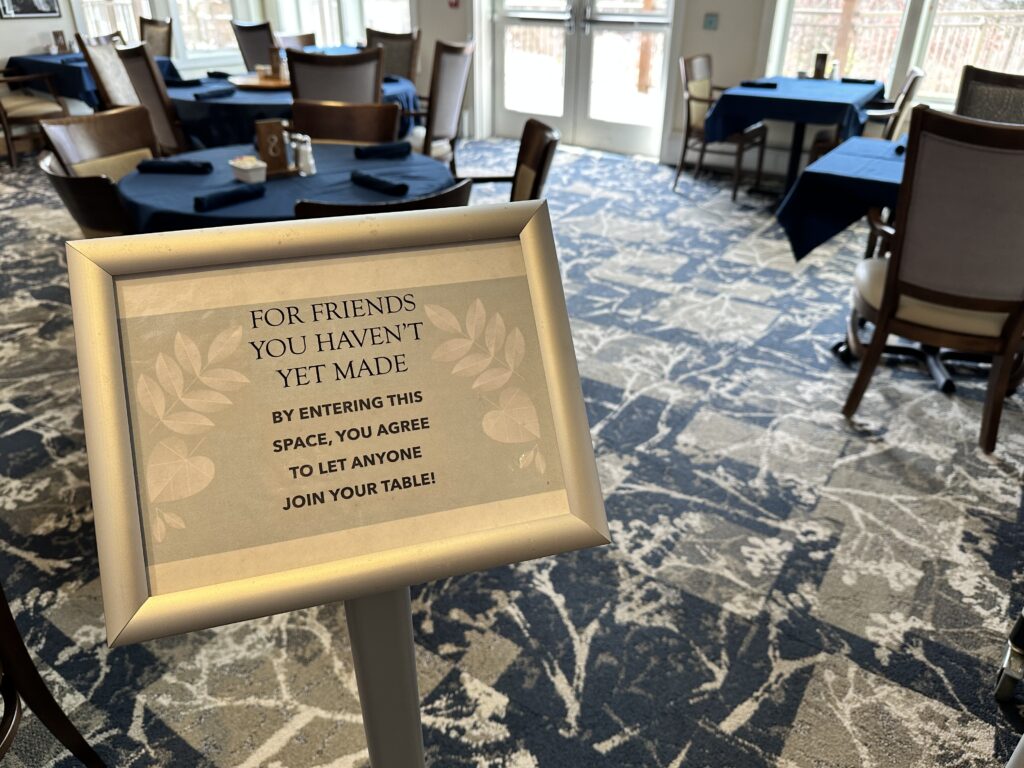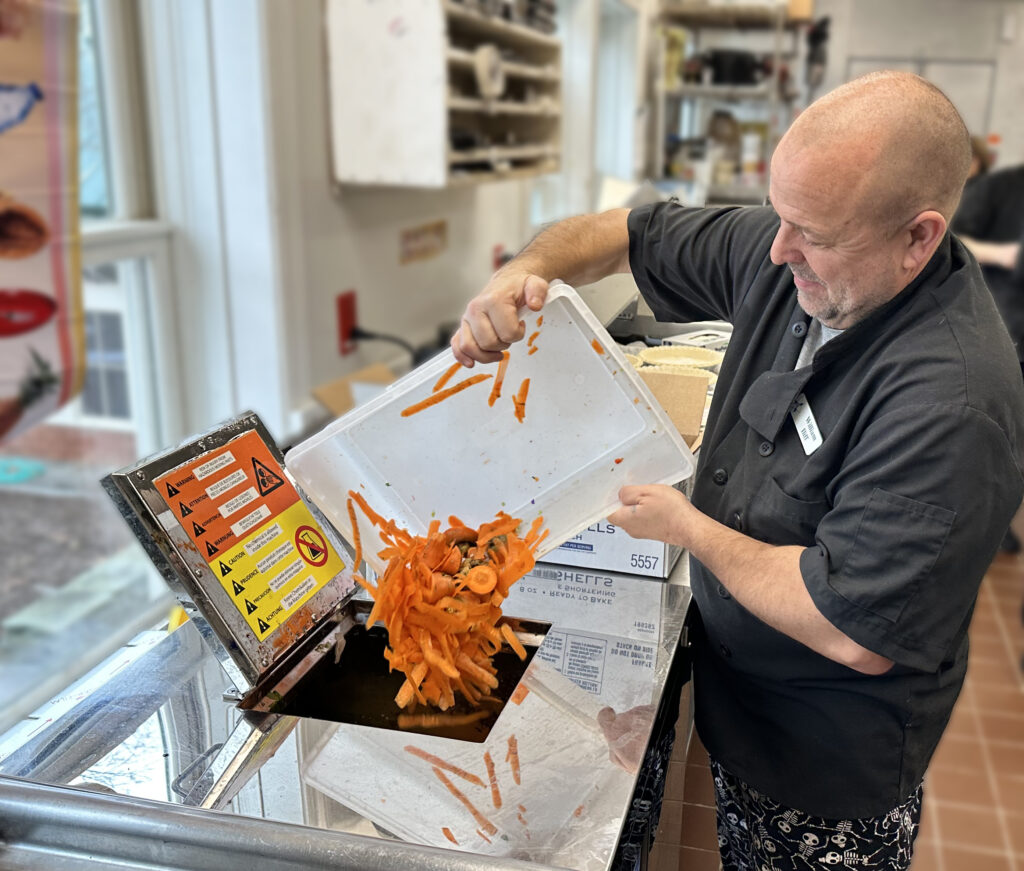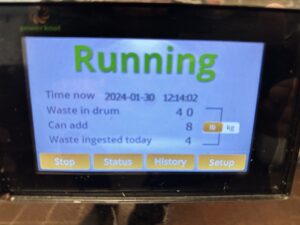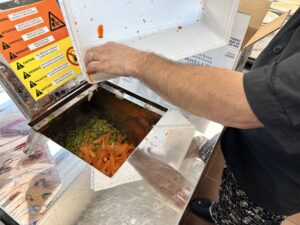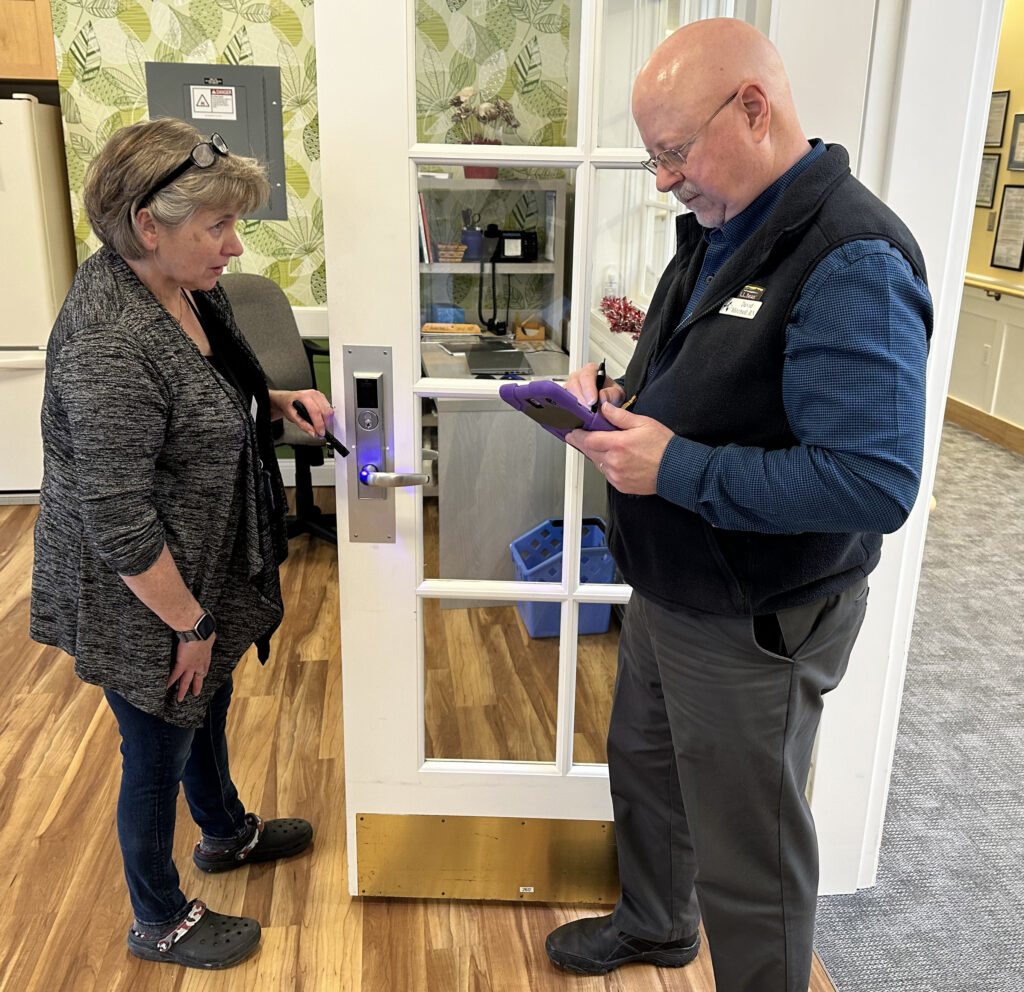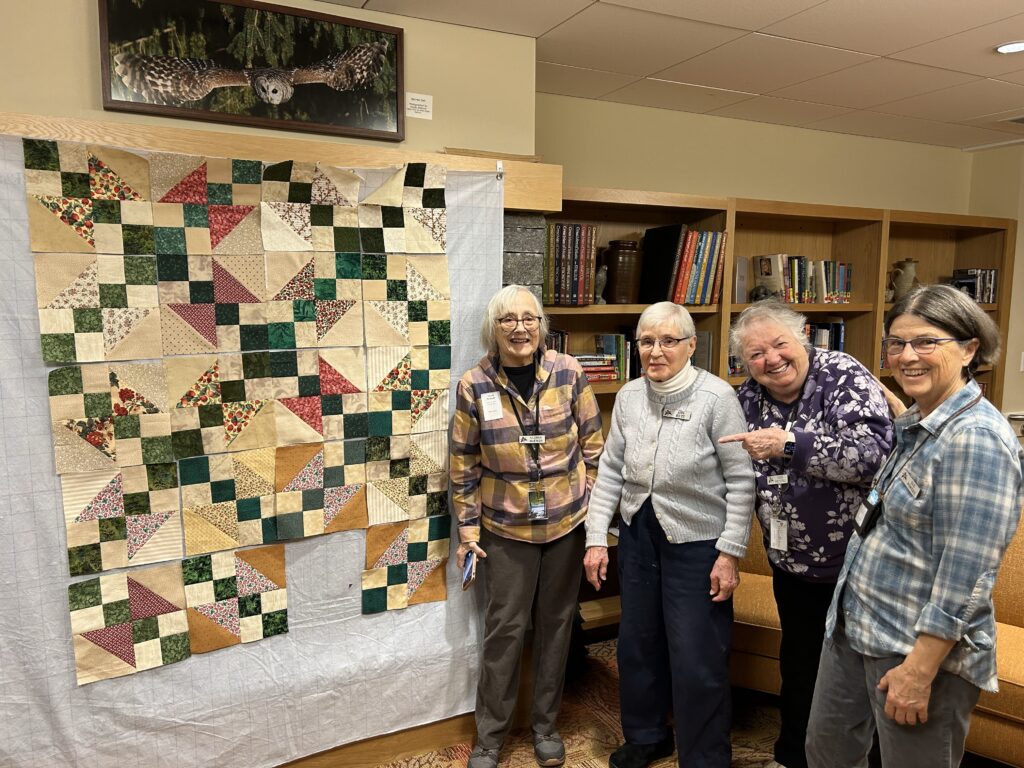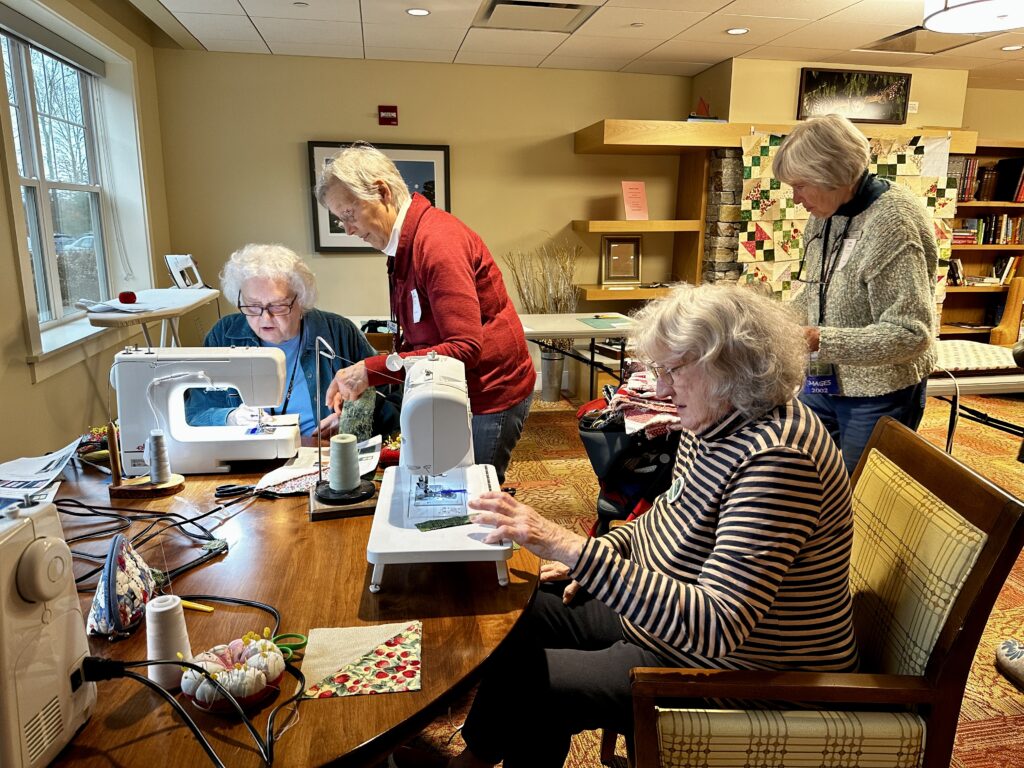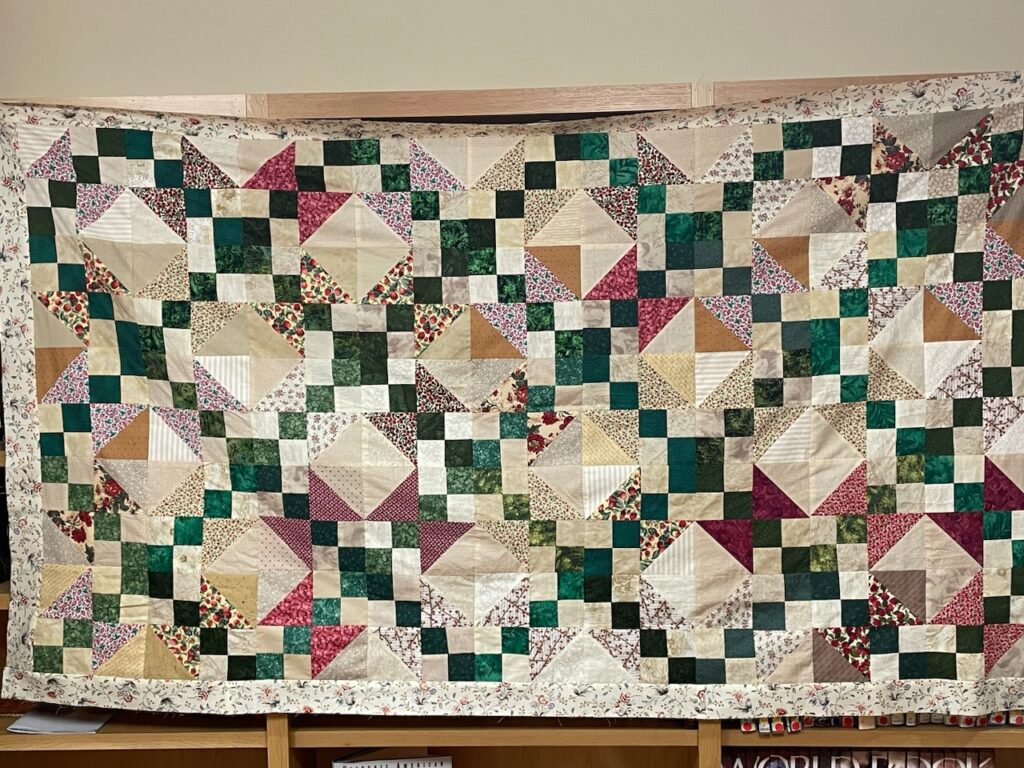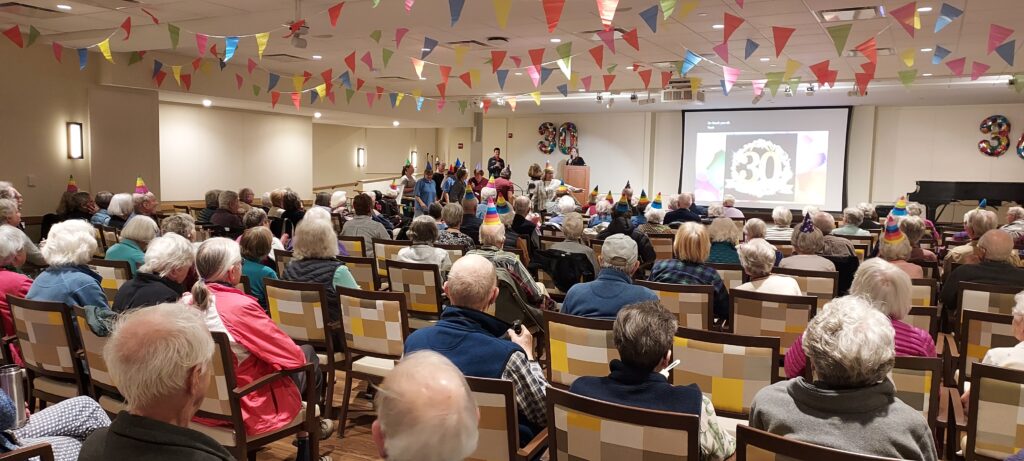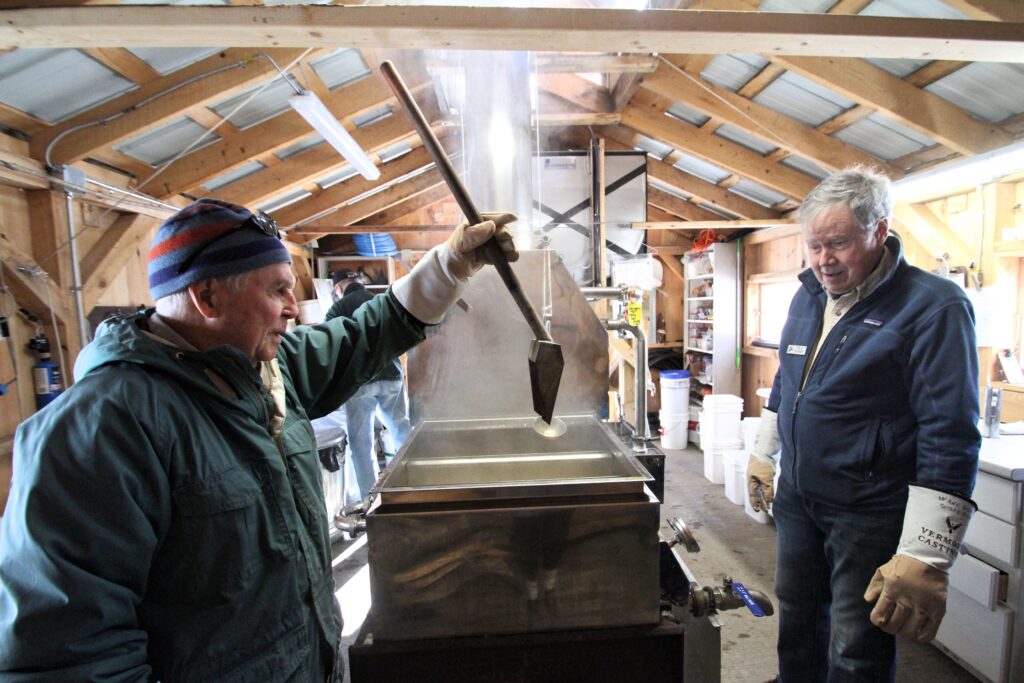When you do your household cleaning, you probably don’t have anyone following along behind you, checking your work, gathering information, and filing a report. That sounds extreme but if you need to have cleanliness with accountability, you need to have a plan to do that.
At Wake Robin, our practices are very thorough. We have a group of people who set the standards for our housekeeping staff, and they also monitor those activities to be sure we’re meeting them. If you combine a well-rounded cleaning program with a regular audit, you can ensure that nothing falls through the cracks. We call these Cleanliness Audits, and this is how we do them.
The purpose of a cleaning audit is to maintain a clean and hygienic work environment for
staff, residents, and visitors. It helps to guard against infection and reduce the spread of germs and viruses. At the start, Tammy Latreille, Support Services Manager for Environmental Services, and David Mitchell, Quality Assurance Nurse, assessed where we were with our audit practices and what were the expectations. Then they made a plan for improvement.
The team also includes Dawn St. George and Ava Hasani, Support Services Coordinators for Environmental Services. David says he is the support person for the team, collecting the data, while Tammy, Dawn, and Ava are the deciders who determine our standards.
In 2018, we swapped our old pencil and paper system for the digital world of CompuClean, a software suite developed by the Spartan Chemical Company, our supplier of cleaning products. CompuClean records our data on a tablet crunches the numbers, and generates reports that show what we are doing well and which areas need improvement. The program sends an email detailing action items where follow-up is needed. The program is customized for Wake Robin, creating different audits and different schedules.
CompuClean records our data on a tablet crunches the numbers, and we get reports that show what we are doing well and what areas need improvement. The program sends an email detailing action items where follow-up is needed. The program is customized for Wake Robin, creating different audits and different schedules.
We create a task list specific to each space. For example, we’ll start with a random selection of three residences in the Linden Health Center. Add in the chart room, hallway, living room, and shower room. Now we begin the audit: How do the floors look? Is the area dusty? Are the high-touch areas clean? – telephones, door handles, and faucets. The audit team checks surfaces with ultraviolet light which causes bacteria and other materials to fluoresce – they glow in the dark! The usefulness of the audit is in checking something that has recently been cleaned. Some areas are audited monthly, and others are on a quarterly schedule. Our cleaning experts describe this as a continuous cycle: perform the cleaning tasks, do the audit, gather the data, communicate the results, and circle back later.
Another benefit of doing the audits is that besides the cleanliness checks, they also reveal other areas that need attention. Tammy says, “It makes you slow down and look at all the details.” The cleaning staff generate work orders for general maintenance needs they might notice. It might be a paint touch-up or tightening a handle.
David sums it up: “There’s a lot that’s good here. People should feel comfortable that there’s a lot of effort that goes into keeping this place clean. Overall, we do a really good job.”
We often hear visitors to Wake Robin remark on how clean it is. It’s nice to know our cleaning standards, practices, and audits contribute to a safe, welcoming environment.



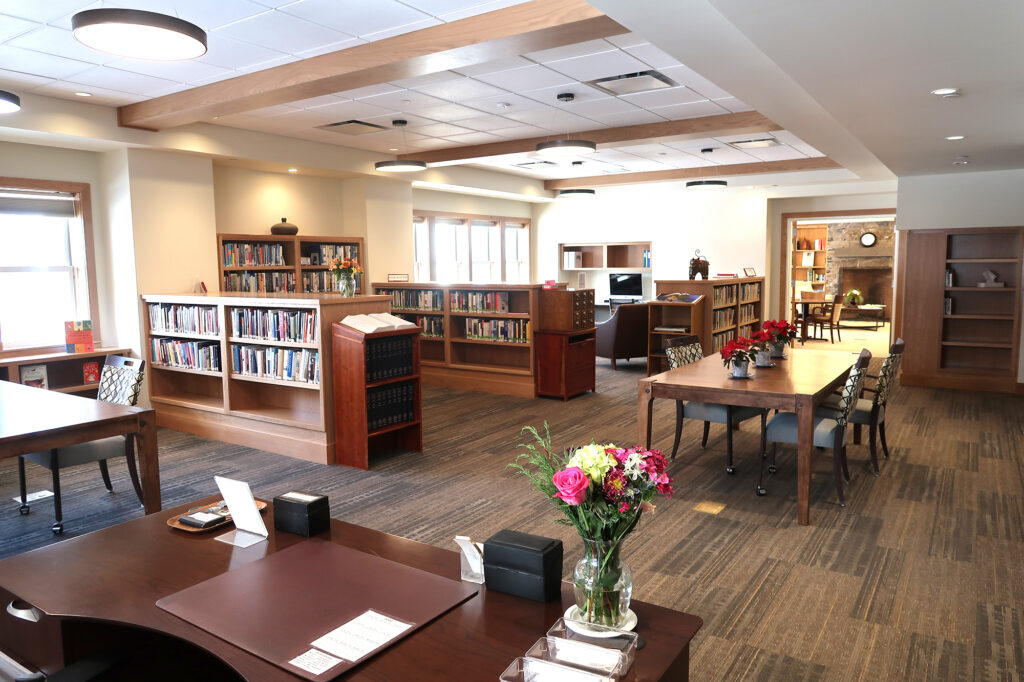 Much of the information we read comes to us on various screens…computers, tablets, e-readers, even phones. The residents and staff of Wake Robin still treasure the experience of holding a real book with a sturdy library binding and protective cover. Whatever the content, a book has substance and weight. It is a comfortable tactile experience.
Much of the information we read comes to us on various screens…computers, tablets, e-readers, even phones. The residents and staff of Wake Robin still treasure the experience of holding a real book with a sturdy library binding and protective cover. Whatever the content, a book has substance and weight. It is a comfortable tactile experience.